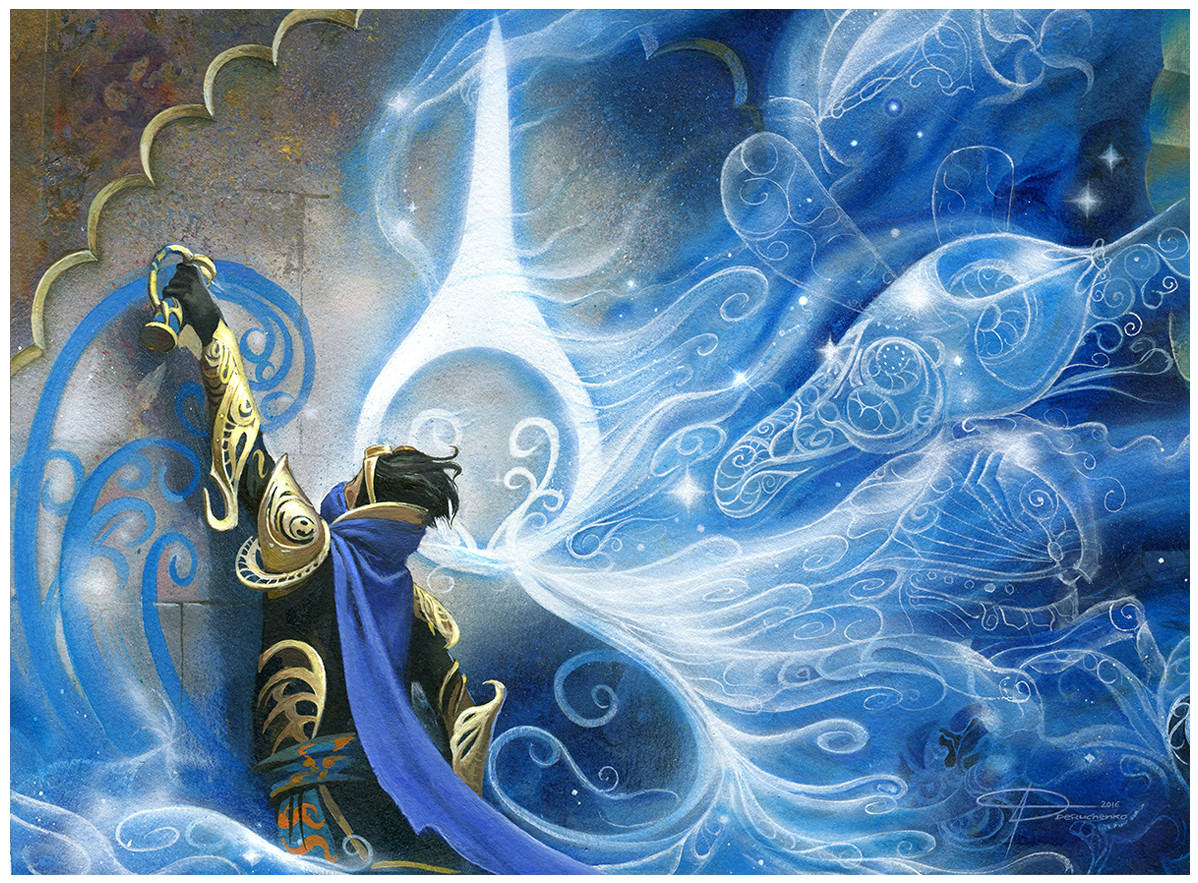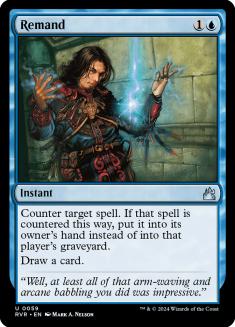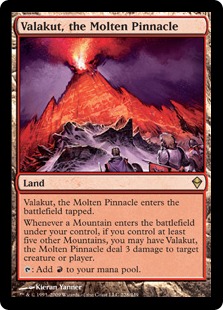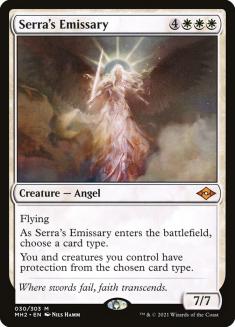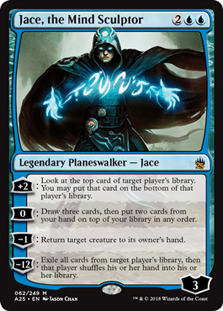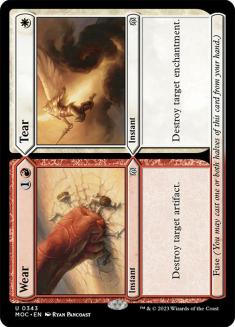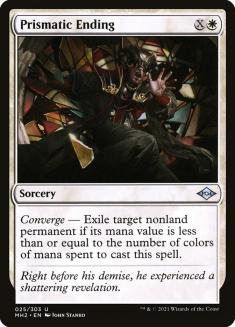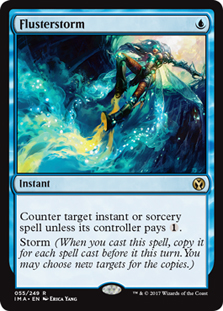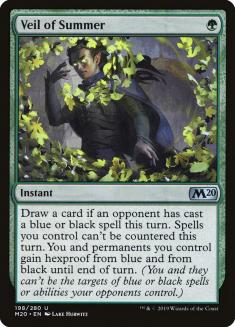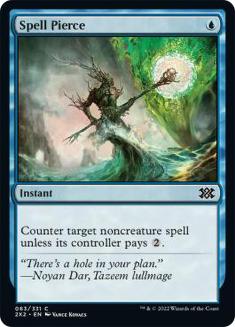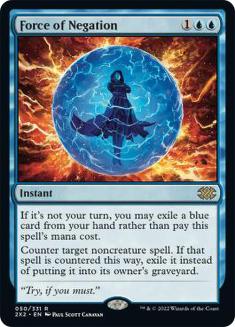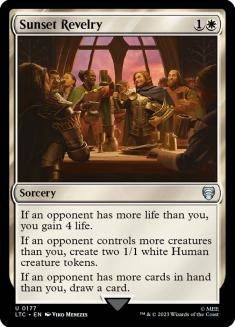With a major Modern tournament coming up this weekend in Las Vegas, all eyes are on that format. Innistrad: Crimson Vow hasn’t made a significant impact on the metagame, so I suspect we’ll see very similar decks to what was played at the recent Invitational. And despite Modern’s long-held reputation as a haven for linear strategies, that actually means a lot of interaction.
Simply put, the interactive tools that have been added to Modern in recent years have completely reshaped the format. Force of Negation, Prismatic Ending, Unholy Heat, and Solitude are just a sampling of the great removal and counters that Modern players now have access to and that have made life a lot more difficult for linear decks. Yes, Gruul Belcher just had a great weekend, taking down both Modern Challenges on Magic Online (MTGO), but I suspect that is largely due to such a strange deck not garnering the respect it deserves, and now, with a large target on its back, the deck’s fortunes will quickly turn.
Spells (60)
- 4 Desperate Ritual
- 4 Goblin Charbelcher
- 4 Pact of Negation
- 1 Pact of the Titan
- 4 Recross the Paths
- 4 Manamorphose
- 1 Pyromancer Ascension
- 4 Pyretic Ritual
- 1 Infernal Plunge
- 2 Reforge the Soul
- 3 Irencrag Feat
- 4 Valakut Awakening
- 3 Bala Ged Recovery
- 2 Emeria's Call
- 4 Spikefield Hazard
- 1 Song-Mad Treachery
- 2 Sea Gate Restoration
- 4 Shatterskull Smashing
- 4 Turntimber Symbiosis
- 4 Strike It Rich

Spells (60)
- 4 Desperate Ritual
- 4 Blood Moon
- 4 Goblin Charbelcher
- 2 Pact of Negation
- 1 Pact of the Titan
- 4 Recross the Paths
- 4 Manamorphose
- 1 Pyromancer Ascension
- 4 Pyretic Ritual
- 1 Infernal Plunge
- 1 Reforge the Soul
- 3 Irencrag Feat
- 4 Valakut Awakening
- 3 Bala Ged Recovery
- 2 Emeria's Call
- 4 Spikefield Hazard
- 1 Song-Mad Treachery
- 2 Sea Gate Restoration
- 4 Shatterskull Smashing
- 4 Turntimber Symbiosis
- 3 Strike It Rich
Sideboard

But Belcher’s performance does highlight one of my biggest rules for Modern deck selection: when all else is equal, choose the deck that is lesser-known. When everyone has access to such a wide array of disruption, it’s a great advantage to come in with a deck that most players won’t prepare for. You won’t completely dodge everyone’s interaction and waltz your way to the trophy like in your dreams, but it makes things much easier when your average opponent only has four to six relevant cards instead of ten to twelve. Or that their sideboards aren’t built with haymakers for your strategy.
When all else is equal, choose the deck that is lesser-known.
So while I won’t be attending MTG Las Vegas this weekend, I would suggest to everyone that’s still settling on a deck choice to take a long look at what I consider to be the single most underrated deck in all of Modern: Four-Color Indomitable Creativity.
Why the Deck Is Overlooked
With Modern currently centered on fair, interactive strategies, we have a fairly typical metagame evolution where players are looking to pack their deck with more card advantage and powerful effects to give themselves an advantage in midrange mirrors. This slowed-down metagame is one of the reasons control has had so much success in Modern recently. But it also opens up a ton of space for decks that are able to interact effectively but eventually set up a combo kill.
Rather than devote more and more space to individually powerful cards, a combo kill sidesteps the arms build-up that midrange metagames bring, much like Alrund’s Epiphany did in Standard. It takes a lot of extra cards from a Yorion, Sky Nomad to stand up to an Emrakul, the Aeons Torn.
However, playing a combo means you have to play individually weaker cards in order to properly enable it. In Four-Color Indomitable Creativity, those constraints come in the form of cutting all creatures, even interactive ones like Solitude and Fury, and playing token makers like Hard Evidence and Prismari Command. Moreover, you have to warp your manabase around Mountains in order to play Dwarven Mine.
Outside of these cards, the deck looks remarkably similar to other midrange decks with various planeswalkers and efficient removal like Prismatic Ending. The only difference is the combo at the top-end instead of some source of overwhelming card advantage.
But seeing cards like Hard Evidence and Prismari Command in a decklist turns off a lot of players. It’s easy to fall back on simplistic mantras like “Hard Evidence is unplayable in Modern” and then never investigate further. But both of these cards, in addition to serving a key purpose in enabling Indomitable Creativity, interact at key axes of the format. Hard Evidence provides a great early blocker for Ragavan, Nimble Pilferer and Goblin Guide. Prismari Command is excellent against Colossus Hammer decks while still killing a wide range of common permanents in other matchups. Command also plays nicely with Wrenn and Six, letting you loot extra lands into key spells later in the game, making it much better in this deck than in most others.
I also think this deck is underrated because the original version of the deck, which was a linear combo strategy with Velomachus Lorehold and various extra-turn effects, was not good. At that point many players dismissed the deck, and continue to dismiss it at each step in its development, failing to notice its progress into viability. First it was cutting Savor the Moment entirely for more interaction. Then it was adding Emrakul, the Aeons Torn over the second copy of Velomachus Lorehold for a more robust combo that didn’t rely on a 5/5 with no built-in protection surviving. And finally it was moving away from the Dragon and Time Warp completely, instead focusing on putting in Emrakul alone.
The end result is a deck that looks similar, but plays much differently from the previous iterations. The current builds of Four-Color Indomitable Creativity are control decks first and combo decks second, not the other way around. Without the slots dedicated to Time Warp and Savor the Moment, they have the requisite interaction to play the control role effectively, and the longer you wait to fire off Indomitable Creativity the safer it will be, as you can target multiple creatures to dodge spot removal or ensure you get both Emrakul and Serra’s Emissary to protect it from Solidarity or Teferi, Time Raveler.
With such marked progress in a relatively short time frame, Four-Color Indomitable Creativity hasn’t had enough time for its reputation and results to match its reality, and that makes it underrated. This deck has the tools to compete in the same kinds of games that Azorius Control, Temur Crashcade, and Four-Color Elementals plays, but has the best plan for going over the top in the long game — a major advantage over its competitors.
The List
Most current lists of Indomitable Creativity are, for good reason, derivative of the following list, piloted by Manacymbal to first place in a recent Challenge:
Creatures (2)
Planeswalkers (11)
Lands (24)
Spells (23)
- 2 Lightning Bolt
- 3 Remand
- 4 Fire
- 4 Indomitable Creativity
- 3 Prismari Command
- 4 Prismatic Ending
- 3 Hard Evidence
Sideboard

Manacymbal has put more work into the deck than perhaps anyone else in the world, so he’s a good source for a solid list, and I agree with nearly everything he’s doing in this list. The maindeck doesn’t have any fluff and every card has its purpose. There’s plenty of early interaction, some planeswalkers to generate card advantage, and just enough slots devoted to the combo to make it work. You want to be minimalistic with the combo precisely because you’re a control deck first.
Note that both the high-end planeswalkers, Jace, the Mind Sculptor and Nahiri, the Harbinger, let you get your creatures back into your deck should you draw them. It’s important to have some effects that allow you to do that so you can’t lose access to the combo due to bad variance, but it’s much better to have the effect stapled onto cards that have plenty of other functions in the deck. You’re not losing much by adding these cards, even Nahiri, which is a combo piece in and of itself and can exile annoying cards like Urza’s Saga and Ensnaring Bridge.
I also like that the sideboard is geared towards Boros Burn and Azorius Control with plenty of cheap counters, a great secondary threat in Shark Typhoon to punish control players for playing draw-go, and the full four copies of Sunset Revelry. You could play Blossoming Calm in the Revelry spots, but Revelry is serviceable in more creature-heavy aggro matchups and still excellent against Boros Burn.
The control matchup can be tough since the majority of your interaction is based in removal, while Boros Burn takes full advantage of the deck’s painful manabase. Among the most-played decks in Modern, they’re the two I’m most afraid of, so gearing the sideboard towards them makes complete sense.
My one point of disagreement is with Remand. Normally, combo-control decks like a card like Remand, since it helps you play control while also digging deeper for your combo. But this deck is skewed so far towards the control end of the spectrum that it’s not necessary to fill your deck with cantrips. You can wait to find your Indomitable Creativity in most situations. So I would only play Remand if it’s an actively good card on its own merits, and despite the card’s pedigree, it just isn’t.
Curves are so low in Modern these days that it’s rare for Remand to trade up on mana, and it’s rather poor at protecting your combo with how many free spells are around these days. I’d love to play Counterspell in that spot, but the Mountain-centric manabase won’t support it, so I’d look to narrower, but more powerful options like Force of Negation and Spell Pierce. Here’s the list I’d play:
Creatures (2)
Planeswalkers (10)
Lands (24)
Spells (24)
- 2 Lightning Bolt
- 2 Spell Pierce
- 4 Fire
- 4 Indomitable Creativity
- 2 Force of Negation
- 3 Prismari Command
- 4 Prismatic Ending
- 3 Hard Evidence
Sideboard

With Prismari Command also able to discard Emrakul, I don’t think you need three four-mana planeswalkers. Indomitable Creativity is already an expensive sorcery, and too many of those will clog your hands. Instead I go up to four counterspells, which should help against control decks in particular, though in general you can never have enough cheap interaction.
The most important aspect of playing this deck is patience. There are few matchups where you need to turbo out the combo as quickly as possible, and doing so on Turn 4 is now risky given that you aren’t sure which creature you’ll get. If your opponent gives you a window to land an Emrakul, you should take it, but always be wary of what your opponent could have to stop it, especially Force of Negation and Solitude. And when in doubt, trust the deck’s long game.
Also, in long games you should look to assemble a small army of Dwarf tokens with your extra lands. This shouldn’t come at the expense of being able to cast your spells, but amassing three or four power for no cost is a great way to make your opponent start tapping out first, which will make forcing through Creativity easier.
Lastly, Wrenn and Six and Jace, the Mind Sculptor are capable of winning games without any of your creatures getting involved. So if your opponent sells out to stop Creativity, you can sideboard down on the combo and become even more of a control deck. Be aware of this tool at your disposal and take advantage of players who don’t respect this deck’s versatility.
The Primeval Titan Question
There are lists of Four-Color Indomitable Creativity that use Primeval Titan as the creature of choice while incorporating Valakut, the Molten Pinnacle into the manabase. This allows you to freely cast Creativity for X=1 if necessary, while making larger numbers viable for a combo finish. However, those lists have several issues that make them worse than the above.
First, you’re forced to commit to the Valakut plan by incorporating ramp elements like Explore and Strike It Rich. This limits the deck’s early-game interaction, which is tough to do in a field with so many Ragavans and Colossus Hammers. Valakut itself with fetchlands offers good interaction late, but by then you’ve often taken control of the game anyway, so it’s a net negative tradeoff.
Secondly, you make the manabase, already one of the weak points of the deck, even worse. Valakut gives you even more early red sources that make casting your gold cards more difficult, and you’ll have even more awkward opening hands that you have to mulligan. You compensate for this by adding more lands overall so you don’t lose out on the necessary fetchlands and shocklands that make the mana work, but that makes the deck even less dense with interaction, at least in the early-game when it’s most important.
And finally, playing the Primeval Titan version makes you vulnerable to Alpine Moon, a common sideboard card for Lurrus decks against Urzatron and Urza’s Saga decks. Since a big part of why I like this deck is that it’s under-hated by opposing sideboards, I’d rather not take any unnecessary splash damage from cards that are already there.
Sideboarding
VS Mono-White/Orzhov Hammer (Lurrus)
Out:
In:
You want to maximize interaction here and play the control role in the early-game. But as soon as you have a window, get Emrakul onto the battlefield since they rarely have a way to remove it. And even if they have On Thin Ice, you have plenty of answers to the enchantment. Since most of your maindeck is already interaction, you don’t have to change much, just cutting the unnecessary Serra’s Emissary and Jace for two more removal spells in Wear // Tear. The good news is that Hammer decks are set up to play a long game in the face of interaction, but your combo punishes them for doing so, so your opponents are likely to take riskier lines to avoid losing to your combo.
VS Azorius Control
Out:
In:
This matchup is tricky because they have plenty of good ways to disrupt your combo. Counterspells, especially Dovin’s Veto, are obviously problematic, but so too is the presence of Solitude and various planeswalkers that can remove an Emrakul from the battlefield. You can’t name both planeswalker and creature with Serra’s Emissary, and even if you have both, you can always lose them to a Supreme Verdict.
Because of this your most important card is Teferi, Time Raveler, which lets you combo off on their end step and never open a window for them to interact. You don’t have to land Teferi right away, but the games where you resolve one are much easier than the ones where you don’t.
Outside of the combo, try to lean on them with your planeswalkers and force them to expend resources stopping them. You can also pressure their life total with an army of Dwarf tokens. Anything to make them use resources against non-combo pieces. That’s why, as good as the counters are, Shark Typhoon is your most important sideboard card. It lets you create a great threat that forces a response from them, not to mention its ability to attack opposing planeswalkers.
Treat this like a control mirror where your key threats are the planeswalkers and Creativity. You should be trying to force them to commit mana on their turn so you can stick a threat, and then ride that threat to victory or force them to tap out again, opening a window for the next threat to resolve. Whoever blinks first generally loses.
VS Jund Midrange
Out:
In:
Just upgrading your disruption for this matchup, since counterspells are rather poor against discard spells. Rest in Peace shuts down a surprising portion of their deck, so it’s an easy inclue along with Veil of Summer.
The only way they disrupt your combo is by destroying all of the Creativity targets while it’s on the stack, so don’t be too aggressive in going for Creativity on X=1. Also keep in mind that Kolaghan’s Command and Engineered Explosives are potential ways for them to destroy multiple tokens at once, and plan accordingly.
VS Izzet Midrange
Out:
In:
This is a tough matchup to sideboard for because you have to worry about both counterspells and early pressure. Finding the right balance of removal and counters of your own is important, and while Fire // Ice can do a lot of good things in the matchup, it’s the least reliable piece of interaction in the deck. So it gets cut along with Serra’s Emissary to ensure you have plenty of ways to win counter wars. Normally I’d be inclined to cut the expensive planeswalkers as well, but you need them to help answer Murktide Regent.
Don’t be afraid to use your counters aggressively on their card draw if you have plenty. You should only hold back enough to maximize your mana usage on the turn you plan to go for a Creativity.
You could bring in Rest in Peace here to stop some of their threats, but unlike against Tarmogoyf, Rest in Peace does nothing against a Murktide Regent already on the battlefield so I don’t like it.
VS Temur/Four-Color Crashcade
Out:
In:
I’d like to have one more card here, but leaving in a Prismatic Ending to tag a spare Rhino is acceptable, and against the four-color versions you can hit Teferi, Time Raveler, the most important card in the matchup.
Force of Negation and potentially Solitude are the cards you have to worry about, and usually you have plenty of time to set up. You can use your disruption to slow them down if need be, as you don’t want to get into a situation where they can sacrifice enough to an Annihilator trigger to still kill you on the backswing.
VS Boros Burn
Out:
In:
This is a matchup where you can often go for a Creativity on X=1 if it’s open, since Serra’s Emissary on instant or sorcery is excellent against them. You’ll definitely want to prioritize assembling your combo quickly since you never want to leave Burn drawing live. The good news is you have all the tools to disrupt them; it’s just about sequencing well and managing your life total with shocklands.
I like bringing out Spell Pierce over something like Prismari Command because the cheap counters become weak in long games and it’s hard to use them aggressively when you need to tap out early to answer creatures. I also don’t want to bring out too many of the loot effects or drawing an early Emrakul would be devastating.

